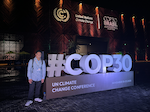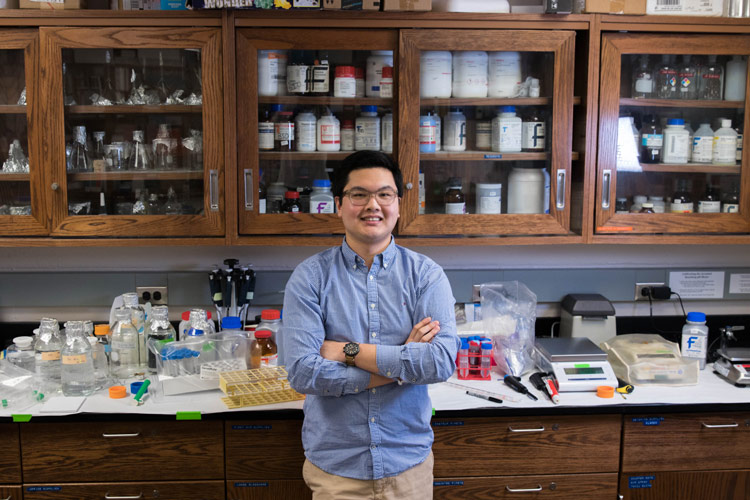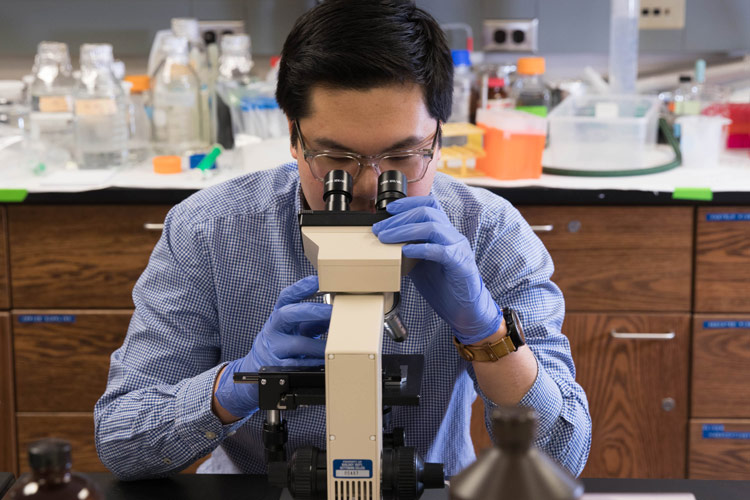

Looking for his first job after college, Huanjia Zhang ’17, a biology major and arts studio minor, knew he would be competing with not just graduating seniors, but also established professionals and scientists.
“I wasn’t confident [about interviewing] at first,” he said.
It wasn’t for lack of credentials. Zhang had research experience under his belt, having worked in Biology Prof. Ryan Kerney’s lab for three years. He was involved in curricular and co-curricular activities. But he also knew he was setting his sights high, interviewing at some of the top research labs across the country. Despite the initial feeling of uncertainty that accompanied his job search, Zhang would come to realize he had a competitive advantage.
“Recruiters were amazed by my research experience,” he said. “For Gettysburg, [conducting research] is normal, but they were impressed.”
One example Zhang could tout: last year he presented research with Kerney at a conference in China, his home country. Just last week, Kerney and fellow researchers released a paper about the vertebrate-algal relationship between green alga and the spotted salamander that was picked up by national media. Zhang is listed as a co-author.
“One recruiter said most undergraduate college students list technical skills on their resumes that they learned and practiced only once or twice in class,” said Zhang. “But they were confident with my experience that I had been practicing and actually using the skills I listed.”

Zhang received multiple job offers, including one from his top choice, the PennChop Microbiome Program. It’s a microbiology lab out of the Perelman School of Medicine and The University of Pennsylvania and The Children’s Hospital of Philadelphia that focuses on understanding how the microbiome impacts human health. Zhang will work as a science technician.
“[In addition to my research experience], they were also amazed by my science communication skills,” said Zhang. “You can’t just do science—you have to be able to communicate with the outside world.”
Zhang, who learned English as a second language, compares communicating about science to translating a language. It can be challenging. And frustrating. But in today’s world of social media and fast-paced communication, scientists are competing for attention and need to be able to explain the impact of their research.
In his senior year Zhang sought out a project to flex his communication skills, tapping Environmental Studies Prof. Salma Monani, who earned her Ph.D. in science and technical communication, to be his capstone project advisor. He learned from his faculty advisor, Biology Prof. Alex Trillo, that the population of bats is declining globally, but also locally in Pennsylvania. Zhang thought that would be a good place to start.
“Science definitely needs students like Huanjia who are able to grasp the complexity of specialized scientific research and relay these in engaging terms for lay public,” said Monani. “I have been impressed by his focus, initiative, and ability to think creatively as he tackled the fun and challenge of communicating his biological interests.”
Coining it his “bat-man project,” Zhang created a communications plan to bring awareness to endangered bats and to teach the general public how they could help.
With Monani’s guidance, Zhang focused on three key components of communication: science journalism, audio production, and video production. First, he created a website devoted to interpreting science. In all caps on the homepage reads: SCIENCE IS FOR EVERYONE. Monani recommended Zhang read and analyze top science articles. He learned how to write a good lede and how to tell a story to interest readers. He drafted the script for a video that teaches people how to make their own bat houses, which can aid in conservation. He listened to podcasts. He studied their structure (as any good scientist would) to replicate for his own blog posts. Trillo connected him with Mike Scafini, an endangered mammal specialist of the Pennsylvania Game Commission, who he interviewed.
“When I interviewed [Scafini], he told me four of the six species of bats common in PA have declined 99 percent, due to a disease called white-nose syndrome,” said Zhang. “It’s been wiping out bat populations for 10 years and the general public knows nothing about it.”
In addition to learning about bats, Zhang learned what goes into producing effective science communication materials.
“I learned that something that sounds really easy, like audio production, is actually really hard,” he joked.
Zhang said it took him hours to transcribe his interview with Scafini, and more time to produce the final cut of the podcast that made it to his website. Although it was hard work, he said the tangible purpose and process of the project taught him vital skills.

“The experience was not so much like a [senior capstone], but I was completing a project together with Prof. Monani,” he said. “One thing that’s important to me is I want to know I [have the skills] to teach myself after I graduate. Before educating others, we educated ourselves. That’s something all good journalists do. And the idea of breaking things down to understand them—that’s the scientist in me.”
In a few years, Zhang plans to pursue graduate school, potentially in the area of biology, and will continue to pursue his passion for science communication.
“I don’t want to spend the rest of my life doing bench work in a lab without letting people know what science can do or influence society,” said Zhang. “For example, climate change—people don’t understand the science, which is hurtful. Scientists have been trying to figure out why they’re working so hard and why people are stupid, but people aren’t stupid. There’s an information gap between scientists and the general public. That’s something science communication can fix.”


